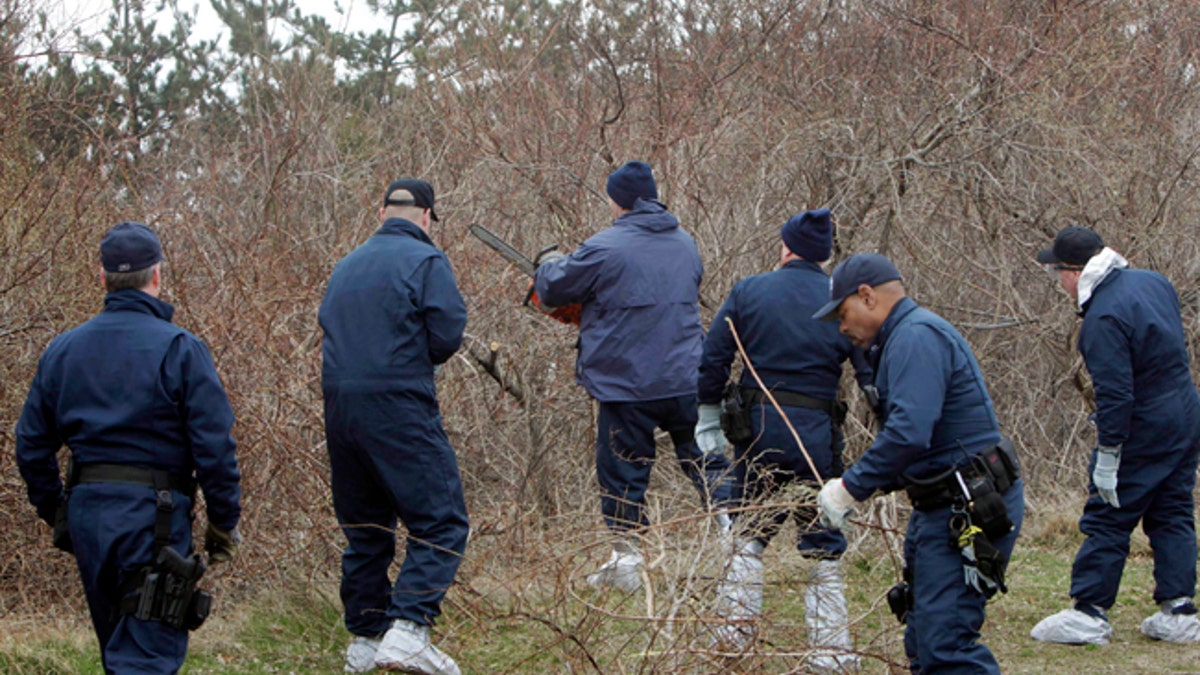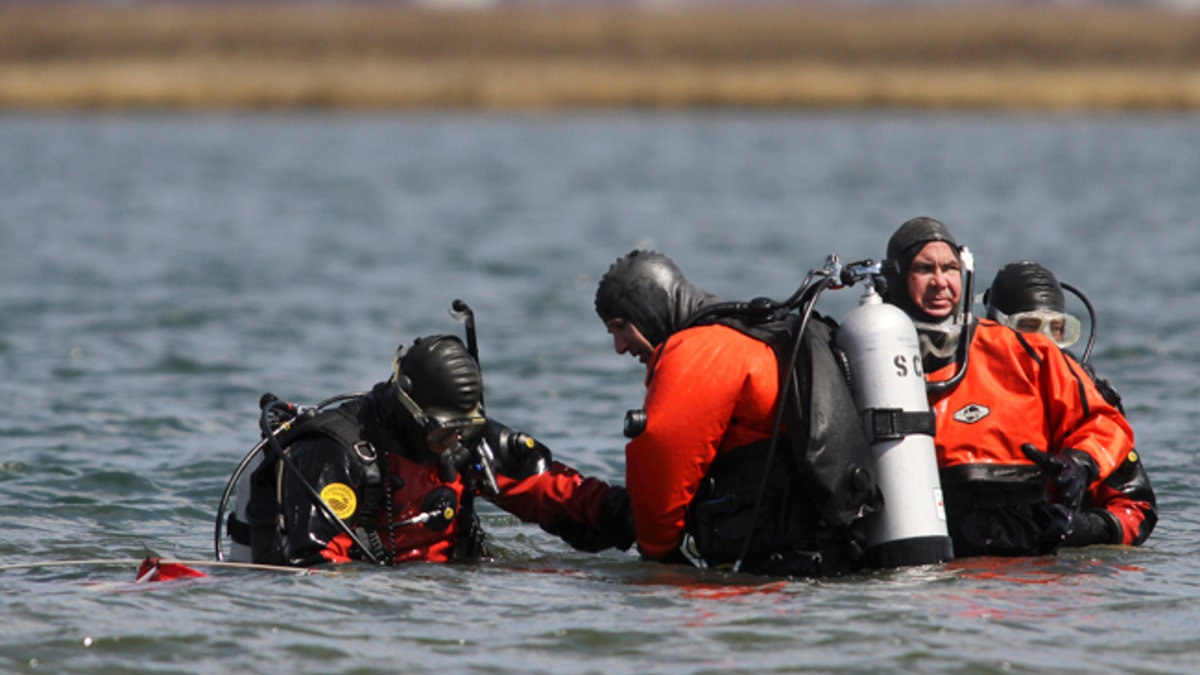
Emergency personnel search through the brush for human remains near Jones Beach in Wantagh, N.Y. in this April 11, 2011 file photo. (AP)
MINEOLA, N.Y. – For years, the thicket along a beach highway on Long Island held a horrible secret. Hidden from passing drivers were the skeletal remains of 10 people, mostly young women who had worked as prostitutes. Who killed them, and why, is a mystery that has vexed a slew of seasoned homicide detectives.
The case took an intriguing turn when a veteran county prosecutor became the first authority to publicly name a suspect in at least one of the deaths: John Bittrolff, a Long Island carpenter who was sentenced to consecutive 25 years-to-life terms in prison this week for beating two prostitutes to death in 1993 and 1994.
Robert Biancavilla, an assistant district attorney in Suffolk County, said after the sentencing that some of the remains found near Gilgo Beach "may be attributed to the handiwork of Mr. Bittrolff."
If authorities have evidence to back up their suspicions, though, they aren't saying.
Biancavilla declined to elaborate. Suffolk County police officials declined to comment. They last spoke publicly about the case nearly two years ago when they announced detectives were working with FBI profilers on developing leads.
MAN STABBED, CHARGED WITH RAPE AFTER ASSAULTING GIRLFRIEND'S 12-YEAR-OLD DAUGHTER
Any suggestion that Bittrolff had anything to do with the dead women is "laughable," said his lawyer, Jonathan Manley.
Even a lawyer for the family of one of those linked to the case expressed skepticism.
"To stir this pot when there's no evidence is looking to easily blame a convicted killer and not have to perform the investigation that is required," said John Ray, an attorney for the family of Shannan Gilbert, whose disappearance in 2010 several miles from Gilgo Beach triggered the hunt that exposed the larger mystery.

Suffolk County dive team police officers search for possible victims of a suspected serial killer in this April 14, 2011 file photo. (AP)
Gilbert, a 24-year-old sex worker, vanished in spring 2010 after leaving a client's house on foot and disappearing into the marsh.
Months later, a police officer and his cadaver dog were looking for her body in the thicket along Ocean Parkway when they happened upon the remains of a different woman. Within days, three other bodies were found, all within a short walk of one another.
By spring 2011, that number had climbed to 10 sets of human remains — those of eight women, one man and one toddler — all found along several miles of parkway. Some remains were later linked to dismembered body parts found elsewhere on Long Island, making for a puzzling crime scene that stretched from a park near the New York City limits to a resort community on Fire Island and out to far eastern Long Island.
Police found the skull of a prostitute named Jessica Taylor, who was 20 when most of the rest of her body was found in a wooded area of Manorville shortly after she disappeared in 2003. Body parts found on Gilgo Beach were also linked to another corpse found in Manorville in 2000. That female victim has never been identified.
Gilbert's body was found in the marsh in the community of Oak Beach in December 2011, about 3 miles east of where the other 10 sets were discovered.
Police have long maintained that Gilbert's death was accidental. They say she drowned in a drug-induced haze after wandering into the wetland, but her relatives have long disputed that determination. In one of the more unusual twists in the saga, Gilbert's mother, Mari, was murdered last year by another daughter in her upstate New York home.
Bittrolff was arrested in 2014 in an unrelated investigation involving the deaths of two prostitutes left in wooded areas of eastern Long Island two decades ago. The nude bodies of Rita Tangredi, 31, and Colleen McNamee, 20, were found 9 miles (14 kilometers) apart in late 1993 and early 1994. Both women had been strangled and suffered severe head injuries.
Bittrolff, 51, was convicted after investigators linked his DNA to substances found on the women's bodies. He denies killing the women and intends to appeal.
Before he was jailed, Bittrolff lived in Manorville, part of the vast Long Island pine barrens region and the same hamlet where Taylor's corpse and the body of one other woman were found.
John Ray, the Gilbert family lawyer, discounted any significance to the fact that Bittrolff lived there.
"Manorville is a huge, forested area; I don't think that makes it much of a connection. Manorville just happens to be a great place to leave bodies," he said, agreeing that the same could be said for Ocean Parkway.
In talking about the bodies near Gilgo Beach, investigators have said several times over the years it is unlikely one person killed all the victims.
Joseph Pollini, a retired New York City police detective who investigated cold case homicides and now teaches at the John Jay College of Criminal Justice, said he found it hard to believe a prosecutor would publicly connect Bittrolff to the Gilgo Beach investigation on mere speculation.
"It's highly unlikely a district attorney would put his neck out on a limb like that if he didn't have something to back it up," he said.




















